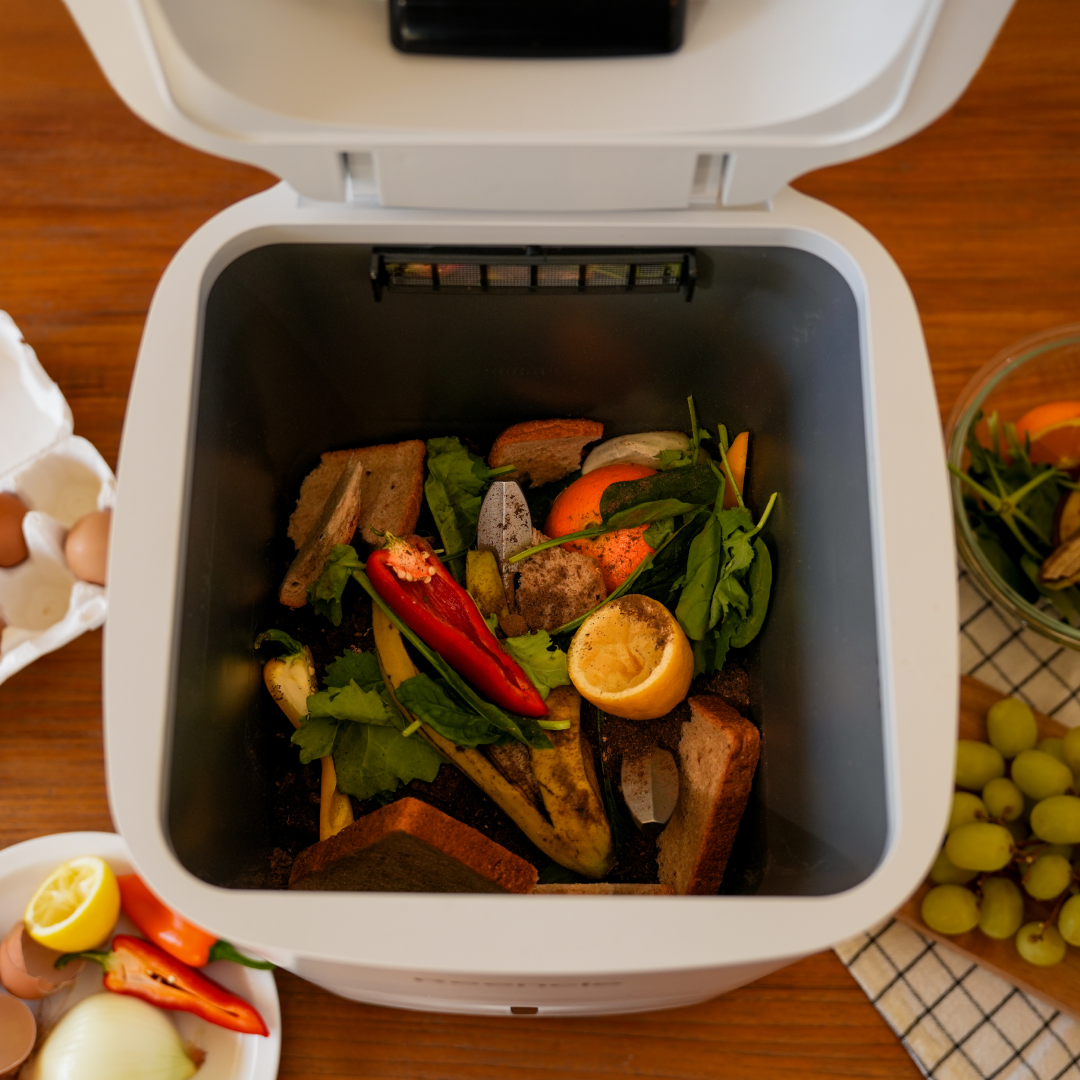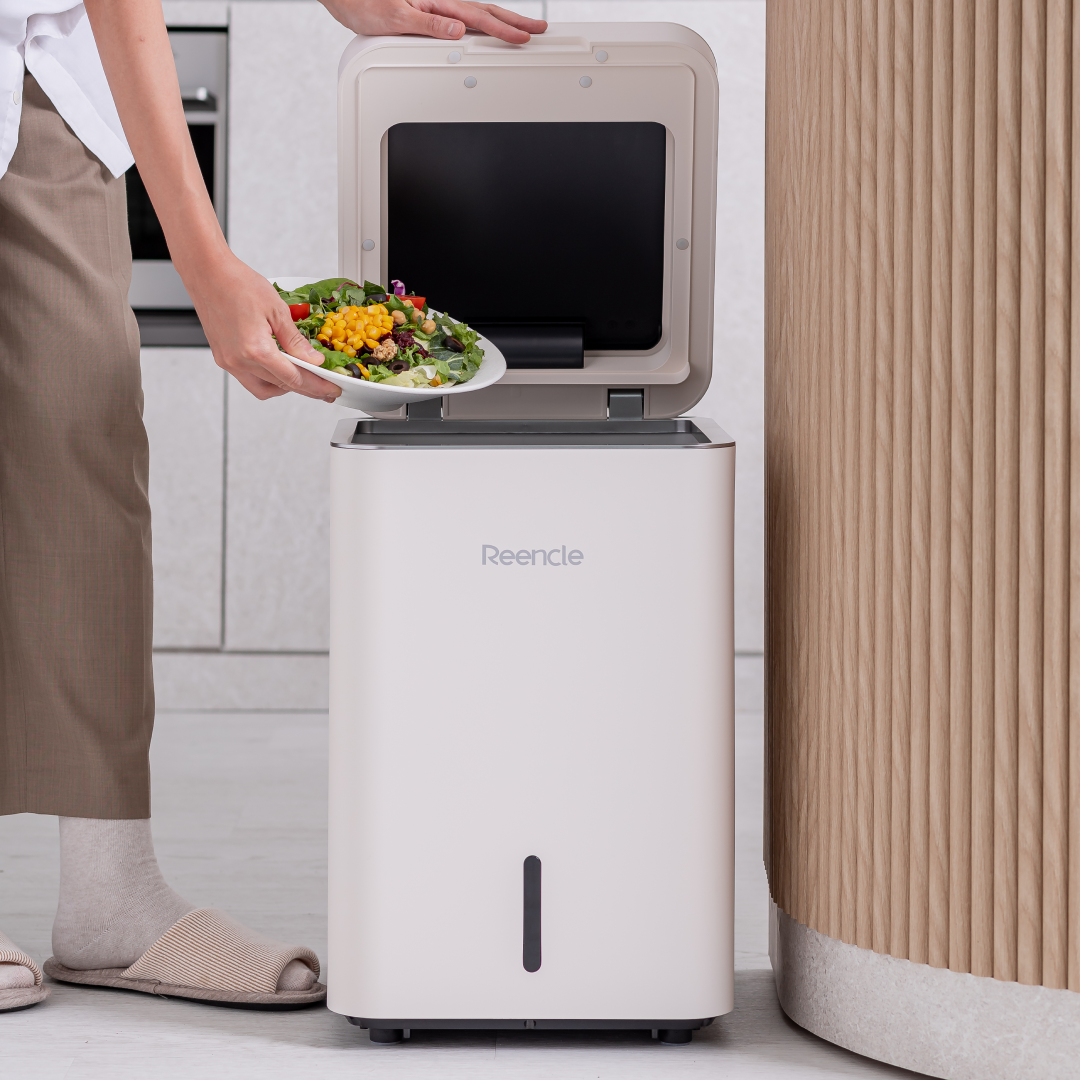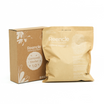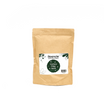How to Care for Calathea:
Essential Tips for a Thriving Plant


Calatheas are native to the tropical regions of South America, particularly Brazil, where they grow under the canopy of rainforests. These plants are part of the Marantaceae family and are renowned for their striking and colorful leaves.
We have compiled a comprehensive guide that addresses these topics:
Table of contents a. Composting Definitions b. Why Compost at Home? c. Benefits of Composting
Why does our partnership matters
For every purchase, we plant 1 TREE to nurture our planet 🌲Together, we are sowing the seeds of change and cultivating a greener, more sustainable world.
Anything else?
Anything else?You willl also receive an official certificate from Greenspark as a token of appreciation for your commitment to the environment! 📜
How do we see the progress?
How do we see the progress?Join us on this remarkable journey towards an impact dashboard.You can see how your eco-smart choice made the world a better place
 View more
View more
Your support empowers reforestation, fights climate change,
and paves the way for a brighter, eco-friendly future.
Join us on this remarkable journey towards a cleaner,healthier planet.
Shop with a purpose, shop with Reencle! 🛒💚

Why does our partnership matters
For every purchase, we plant 1 TREE to nurture our planet 🌲Together, we are sowing the seeds of change and cultivating a greener, more sustainable world.
Anything else?
Anything else?You willl also receive an official certificate from Greenspark as a token of appreciation for your commitment to the environment! 📜
How do we see the progress?
How do we see the progress?Join us on this remarkable journey towards an impact dashboard.You can see how your eco-smart choice made the world a better place
 View more
View more
Your support empowers reforestation, fights climate change,
and paves the way for a brighter, eco-friendly future.
Join us on this remarkable journey towards a cleaner,healthier planet.
Shop with a purpose, shop with Reencle! 🛒💚
a. Composting Definitions

Composting represents a regulated, aerobic (requiring oxygen) procedure wherein organic substances undergo natural decomposition to transform into a nutrient-enriched, biologically stable soil amendment or mulch. The resultant outcome is known as compost. Throughout the composting process, microorganisms consume the materials integrated into the compost pile, utilizing carbon and nitrogen for growth and reproduction, water for material digestion, and oxygen for respiration. It is entirely feasible to engage in composting at home by incorporating kitchen food scraps along with dry leaves and woody debris from your yard.
1. Why People Love Calathea

People are drawn to Calatheas for several reasons:
- Unique Leaf Patterns: Each type of Calathea has its own distinct and beautiful leaf design. For example:
1. Calathea Orbifolia: Known for its large, round leaves with silver stripes.
2. Calathea Lancifolia (Rattlesnake Plant): Features long, narrow leaves with wavy edges and dark green patterns.
3. Calathea Medallion: Has round leaves with dark green borders and light green centers.
4. Calathea Makoyana (Peacock Plant): Displays leaves that resemble peacock feathers.
- Prayer Plant Behavior: Calatheas are also known as prayer plants because their leaves fold up at night and open during the day. This fascinating movement adds a dynamic element to their beauty.
- Variety: With many different species, Calatheas offer a wide range of aesthetic choices for plant
2. Benefits of Growing Calathea

Growing Calatheas not only enhances the visual appeal of your home but also offers several benefits:
1. Air Purification: Like many houseplants, Calatheas help purify the air by removing toxins and improving indoor air quality.
2. Humidity Regulation: These plants add moisture to the air, which can be particularly beneficial in dry indoor environments.
3. Stress Reduction: Taking care of plants, including Calatheas, has been shown to reduce stress and improve mental health.
4. Non-Toxic to Pets: Calatheas are safe for households with pets, as they are non-toxic to cats and dogs.
3. Essential Tips
3. Essential Tips

Light Needs
Calatheas do best in medium to bright indirect light. They can handle low light up to 1,600 lux but thrive between 4,300 lux and 22,000 lux. Too much direct sunlight can burn their leaves, so it’s best to keep them in filtered light.
To put it simply, if full sunlight is 100,000 lux, Calatheas need about 22% of that. A spot near a window with sheer curtains or blinds is perfect. This way, they get soft, filtered light similar to what they would get under tree canopies in their natural habitat.
Watering Tips
Watering is crucial for Calathea care. These plants like their soil to be consistently moist but not soggy. Here’s how to water your Calathea:
Frequency: Water when the top inch of soil feels dry.This usually means every 1-2 weeks, but it can vary depending on your home’s humidity and temperature.
Water Quality: Use filtered water, rainwater, or water that has been left out overnight to avoid chlorine and fluoride, which can harm the leaves.
Humidity and Temperature
Calatheas love high humidity. Here’s how to keep the air around your plant moist:
Humidifier: Use a humidifier, especially in dry climates or during winter.
Misting: Mist the leaves with water regularly.
Humidity Tray: Place a tray filled with water and pebbles under the plant pot.
Grouping: Group your Calathea with other plants to increase humidity.
Ideal temperatures are between 65°F-80°F (18°C-27°C). Keep your plant away from drafts, heaters, and air conditioners, and avoid temperatures below 60°F (15°C).
Best Soil Mix
Calatheas need well-draining soil that stays moist but not wet. A good mix includes:
- Regular potting soil
- Peat moss or coco coir for moisture retention
- Perlite or coarse sand for drainage
This mix helps prevent root rot by ensuring the soil doesn’t stay too wet. Using ingredients like coco peat, coco chips, and vermiculite can help maintain the right moisture balance.
Feeding Your Calathea
During the growing season (spring and summer), feed your Calathea every 4-6 weeks with a balanced, water-soluble fertilizer diluted to half strength. Don’t over-fertilize, as this can harm the plant. In the fall and winter, you can reduce feeding as the plant’s growth slows down.
Pruning and Maintenance
Keep your Calathea looking its best by regularly removing yellow or damaged leaves. This not only keeps the plant tidy but also helps prevent disease and pests. Pruning also encourages new growth.
Repotting
Calatheas generally need repotting every 1-2 years or when they become root-bound. Signs that it’s time to repot include:
- Roots growing out of the drainage holes.
- The plant becoming top-heavy and difficult to water.
When repotting, choose a pot that is 1-2 inches larger than the current one. Gently loosen the roots and use fresh potting mix to give the plant a fresh start.
4. Common Problems and Solutions

Brown Leaf Edges: Often caused by low humidity or poor water quality.
Solution: Increase humidity and use filtered or distilled water.
Yellow Leaves: Typically a sign of overwatering or underwatering.
Solution: Adjust your watering routine to keep the soil consistently moist but not wet.
Leaf Curling: Can be due to too much direct sunlight, low humidity, or underwatering.
Solution: Move the plant to a spot with indirect light, increase humidity, and ensure proper watering
Pests: Calatheas can attract spider mites, aphids, and mealybugs.
Solution: Inspect the plant regularly and treat pests with insecticidal soap or neem oil. Wipe the leaves with a damp cloth to remove pests
5. Conclusion
Taking care of a Calathea is a rewarding experience. These plants add vibrant, patterned foliage to any indoor space. By giving them the right light, water, humidity, and soil, you can keep your Calathea healthy and thriving. Regular care like pruning, feeding, and repotting will ensure your plant stays beautiful.
Whether you’re an experienced plant parent or just starting out, these tips will help you grow a healthy, happy Calathea. Enjoy the lush, tropical beauty that Calatheas bring to your home!
b. Why Compost at Home?

● Composting is like nature's way of recycling. It's a powerful way for us to cut down on our trash, help with climate change, and make good soil. When we turn our kitchen scraps and yard waste into compost, we're changing our leftovers into something useful for the Earth.
● You can easily recycle the food scraps and yard waste you make at home all year long by composting. This helps a lot because it reduces the amount of stuff that would normally go to landfills or be burned in incinerators – things like leaves, grass clippings, and food scraps. Plus, it stops harmful gases from going into the air.
● Composting doesn't take much work, fancy tools, money, or know-how, and it can be kind of fun. The cool part is you end up with a free, good-quality soil booster called compost. This means you won't need as much plant food or bug spray, so you save money.
● The compost you make isn't just good for reducing waste and saving cash. You can use it to make your soil healthier, stop soil from washing away, save water, and make your plants in the garden and yard grow better. In simple terms, composting is an easy and helpful way to deal with trash that benefits both the environment and your own space..











